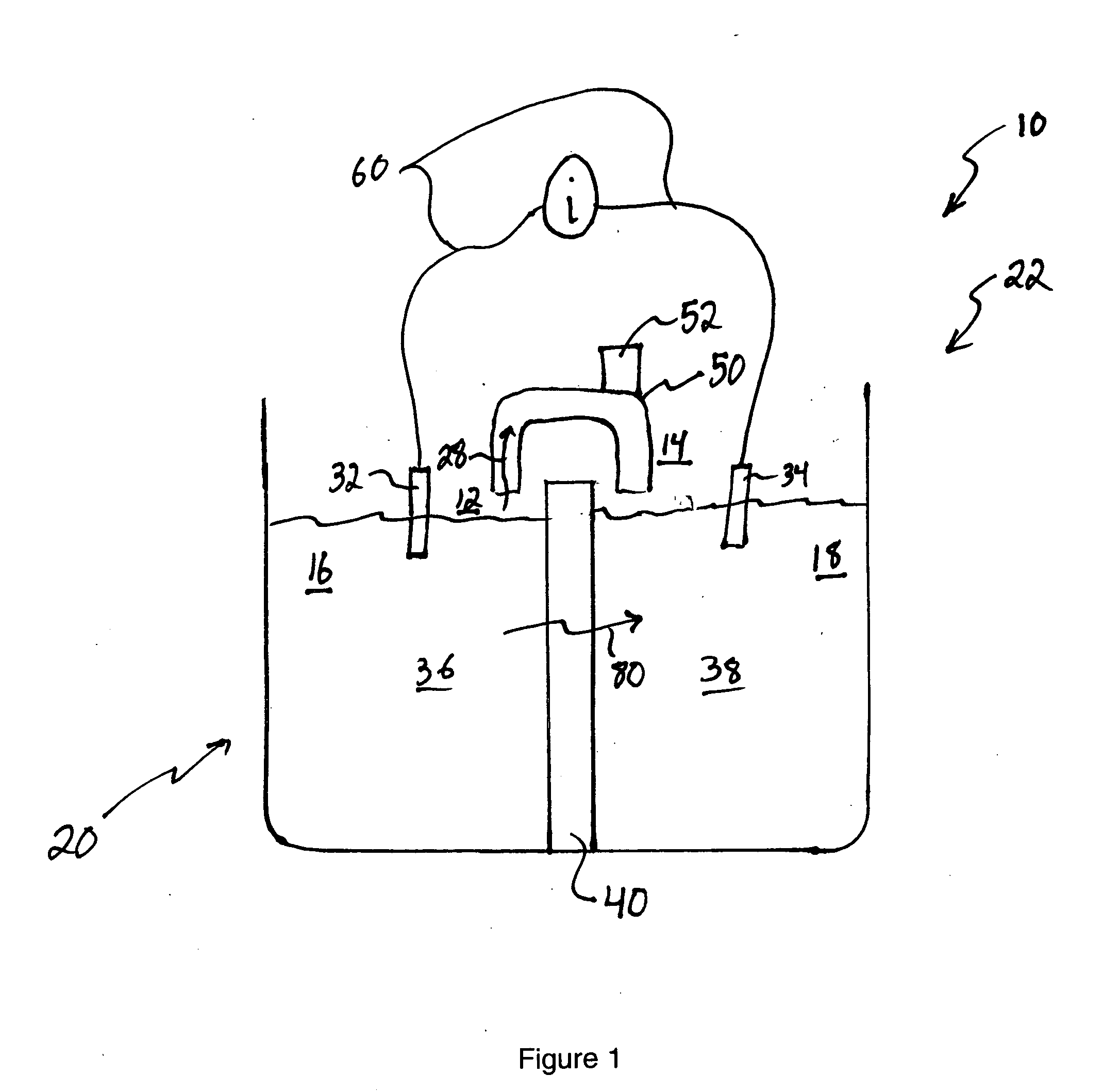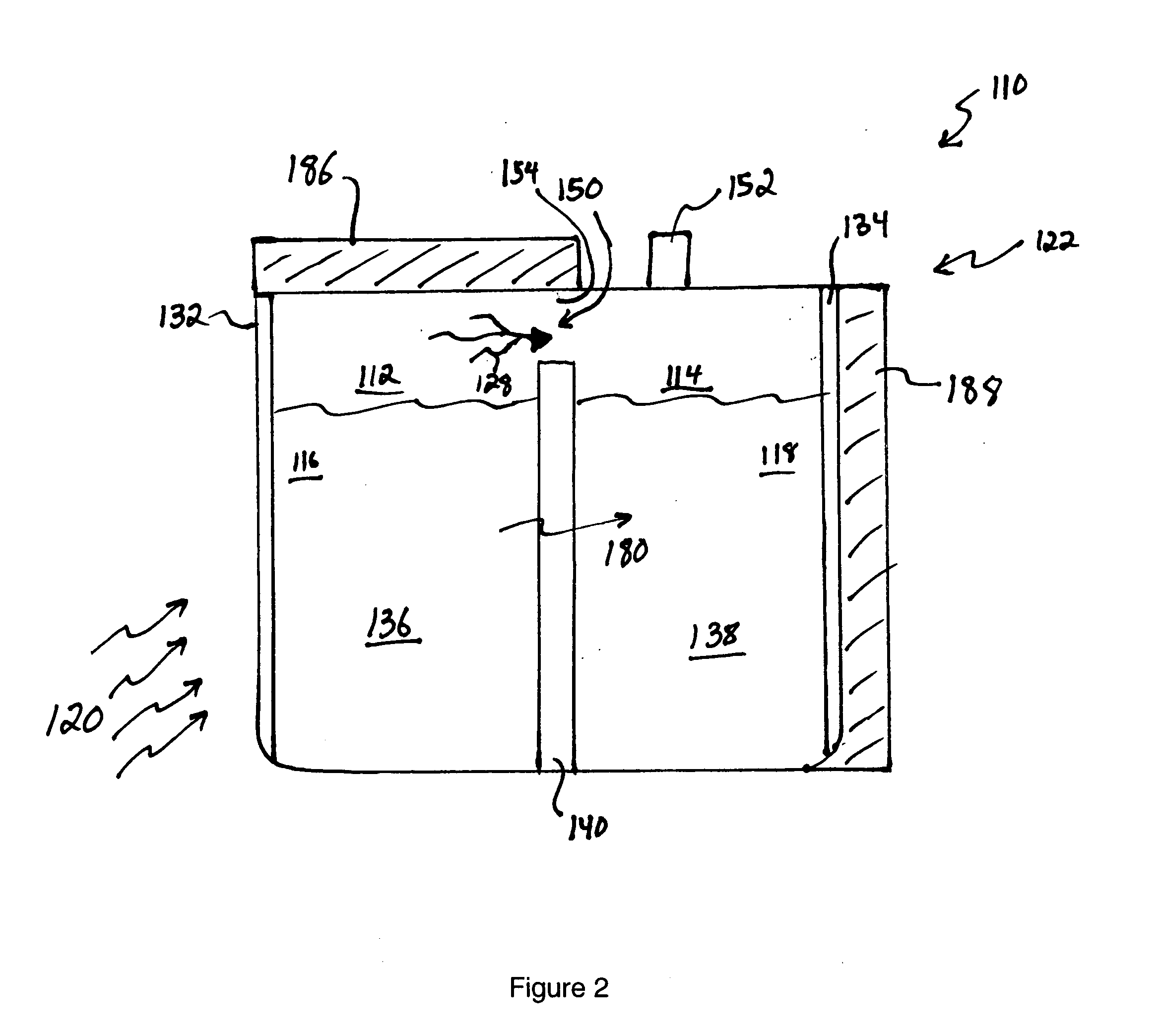Solid electrolyte thermoelectrochemical system
- Summary
- Abstract
- Description
- Claims
- Application Information
AI Technical Summary
Benefits of technology
Problems solved by technology
Method used
Image
Examples
example 1
[0065] In a first example, 15M NaOH is dissolved in water in the anode compartment and 0.1M NaOH is dissolved in water in the cathode compartment that also contains dissolved oxygen. A sodium ion conductive NASICON membrane separates the two solutions. When the circuit is completed the anode reaction occurs:
NaOH=>Na++0.5H2O+0.25O2+e−
[0066] The cathode reaction is:
Na++0.5H2O+0.25O2+e−=>NaOH
[0067] As the reactions occur, Na+transports through the NASICON membrane, oxygen is vented from the anode compartment and oxygen is consumed from the cathode compartment.
[0068] The cell voltage, current and cell power are a function of the log ratio between the concentration of the anode compartment solution and the cathode compartment solution as described by the well-known Nernst equation. If the cell were permitted to run without regeneration, the NaOH concentration in the anode compartment would decline and the concentration in the cathode compartment would rise resulting in decreasing cel...
example 2
[0069] 5M sodium methoxide is dissolved in methanol and 1 M water in the anode compartment and 0.1M sodium methoxide is dissolved in methanol and 1 M water in the cathode compartment that also contains dissolved oxygen. A sodium ion-conductive NASICON membrane separates the two solutions. When the circuit is completed the anode reaction occurs:
MeONa+0.5H2O=>Na++MeOH+0.25O2+e−
[0070] Where Me represents a methyl group,
[0071] The cathode reaction is: Na++MeOH+0.25O2+e−=>MeONa+0.5H2O
[0072] As the reactions occur, Na+ transports through the NASICON membrane, oxygen is vented from the anode compartment and oxygen is consumed from the cathode compartment. The cell voltage, current and cell power are a function of the log ratio between the concentration of the anode compartment solution and the cathode compartment solution as described by the well-known Nernst equation. In this example the solvent is methanol which is the primary solvent vaporized from the anode solution and condensed to...
PUM
 Login to View More
Login to View More Abstract
Description
Claims
Application Information
 Login to View More
Login to View More - R&D
- Intellectual Property
- Life Sciences
- Materials
- Tech Scout
- Unparalleled Data Quality
- Higher Quality Content
- 60% Fewer Hallucinations
Browse by: Latest US Patents, China's latest patents, Technical Efficacy Thesaurus, Application Domain, Technology Topic, Popular Technical Reports.
© 2025 PatSnap. All rights reserved.Legal|Privacy policy|Modern Slavery Act Transparency Statement|Sitemap|About US| Contact US: help@patsnap.com



